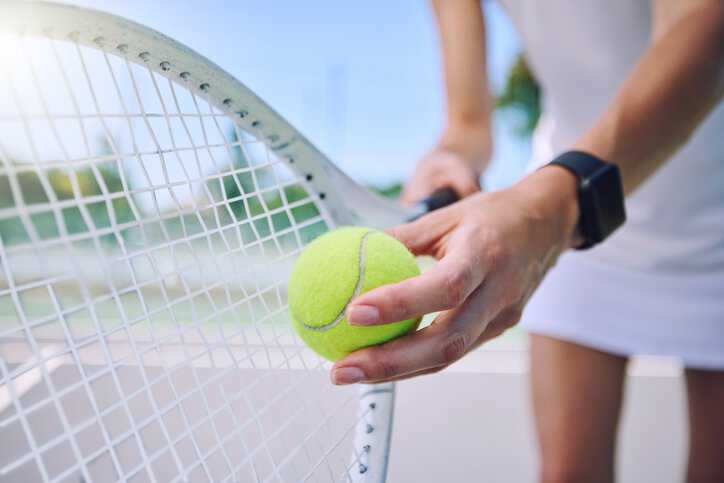How many rackets do professional tennis players carry? Typically, players bring more than five or six rackets of the same make and model each often equipped with distinct attributes, such as grips, string tensions, or weight distributions. Professional players, however, may even carry up to 10 rackets in a match. As such, assuring that tennis players bring rackets up to standards is critical to being match ready. ISO 11416: 1995 — Tennis Rackets – Racket Components And Physical Parameters covers guidelines for tennis rackets.
Facts about Tennis Rackets
Professional tennis players carry numerous rackets due to the distinct capabilities differently manufactured frames offer. For example, in general, a stiffer, heavier frame generates more power than a flexible, poorly strong frame. The stiff, heavy frame, however, may decrease a player’s maneuverability. When choosing a tennis racket for a match, here are general facts about tennis rackets—supplied by former United States Racket Association (USRSA) Technical Advisor Steve Davis—that you should know:
- A heavier frame generates more power
- A heavier frame vibrates less
- A heavier frame has a larger sweetspot
- A stiffer frame generates more power
- A stiffer frame has a larger sweetspot
- A stiffer frame transmits more of the shock load to the arm than a more flexible
- A stiffer frame provides a more uniform ball response across the entire string plane
- A larger frame generates more power
- A larger frame is more resistant to twisting
- A larger frame has a larger sweetspot
What Is ISO 11416?
ISO 11416: 1995 specifies components and physical parameters of tennis rackets and defines terminology. The standard also specifies laboratory methods for measuring some specific parameters of tennis rackets and gives guidelines for the indication of these parameters.
This standard does not include the influence of these parameters on the quality of the tennis racket. For specific requirements of tennis rackets, refer to the Rules of the International Tennis Federation (ITF).
What Are Racket Sports?
A racket is a type of bat consisting of a handled round or oval frame strung with a network of string, catgut, nylon, etc., that is stretched tightly in a key-hole shape. It is used for striking a ball or shuttlecock in games—racket sports—such as squash, tennis, racquetball, ping pong (table tennis) and badminton. In fact, there are more than 30 racket sports played worldwide.
History of Rackets
Traditionally, the frame of rackets for all sports was made of laminated wood and the strings of animal intestine: catgut. This wooden frame had to be strong enough to hold the strings and stiff enough to hit the ball or shuttle; consequently, it limited the traditional racket size. Wooden tennis rackets continued to be manufactured until the 1980s, when metal rackets became the most common tennis tool.
Manufacturers started adding non-wood laminates made first of steel, then of aluminum, and then carbon fiber composites to improve the stiffness of the traditional wood rackets. Improvements in the development of metal racquets meant that the heavy steel and aluminum racquets began to be manufactured with lighter, more arm-friendly materials. Now, most rackets are made of composite materials including carbon fiber or fiberglass, metals such as titanium alloys, or ceramics.
ISO 11416: 1995 — Tennis Rackets – Racket Components And Physical Parameters is available on the ANSI Webstore.
